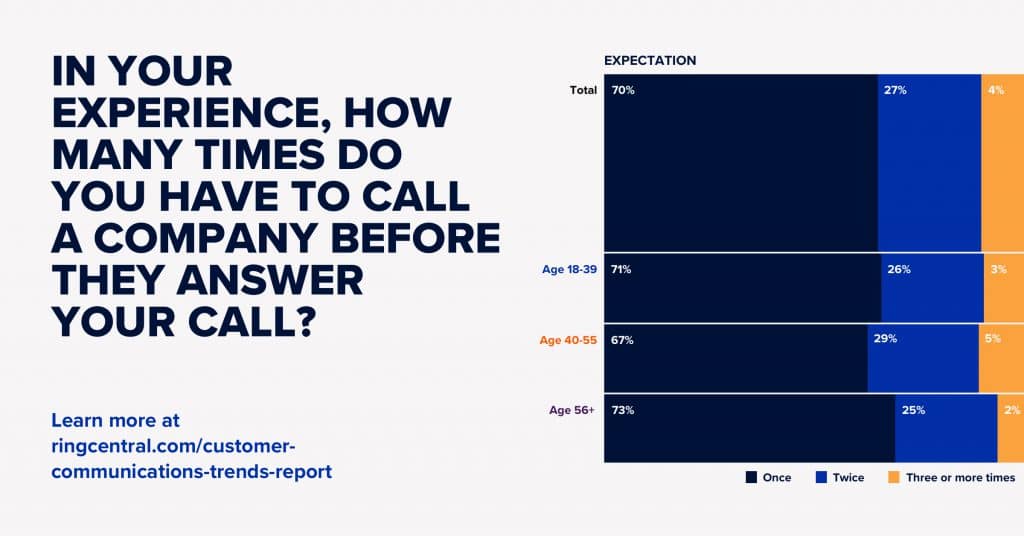What is customer retention rate (CRR)? It’s a measure of how well you keep your customers over time.
It’s an important indicator of the health of your business and a vital number to keep track of. It’s tempting to put a lot of time and effort into finding new customers. But the reality is that, dollar for dollar, it’s far cheaper to keep an existing customer happy (and keep selling to them) than to woo a new one.
Not only that, current customers often buy more things and even refer their friends and families—at no cost to you. Having a high customer retention rate should be a key part of your business strategy.
We won’t just show you how to calculate your customer retention rate in this post. We’ll also look at other useful strategies to give your CRR a boost if it needs a little love. If you want to, skip ahead to the section you’re interested in:
- How to calculate your customer retention rate in 4 steps
- Customer retention rate formula
- What a “good” CRR is
- Customer retention rate vs. customer churn rate
- 10 ways to improve your CRR
- Other business metrics you may want to track
How do you calculate your customer retention rate?
Calculating your CRR is easy:
- Find out how many customers you have at the end of a given period (week, month, or quarter).
- Subtract the number of new customers you’ve acquired over that time.
- Divide by the number of customers you had at the beginning of that period.
- Then, multiply that by one hundred.
That’s a bit of a mouthful so let’s break it down into a formula:
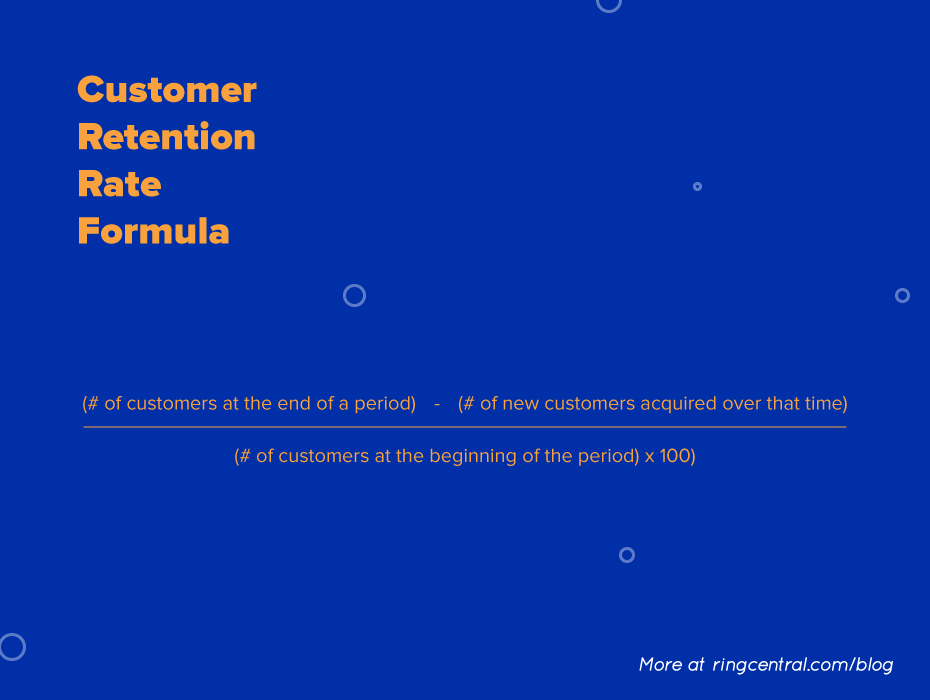
And here’s what this customer retention rate calculation formula looks like as a business scenario:
If you had 1,000 customers at the beginning of Q1 and ended the quarter with 1,200 customers, after having won 300 new ones over the span of Q1, your CRR would be 90%.

(Note that this means that the business lost 100 customers over that span. Hey, it happens.)
Pretty straightforward, right?
What’s a “good” customer retention rate?
That’s a big question that doesn’t have a clear answer. For instance, a software as a service (SaaS) company that uses a monthly subscription model is going to have a much different retention rate than an accounting firm that does 90% of their business during one month of the year.
If you have an accounting firm and you’re good at your job, you might have a pretty high CRR. On the other hand, if you own a retail store, you might not have as many repeat customers in comparison.
For most industries, CRR sits between 50% and 84%. The media and professional services customer retention rate is at the top end of that scale. IT and software businesses, like SaaS companies, would expect a good customer retention rate to hover at around 75%.
💡 Pro-tip:
If you have happy customers, it’s a great opportunity to write case studies about them. It can show other potential customers how to use your product, how great your customer service is, and so on.
Keep in mind that these numbers are broad averages that can change drastically when you drill down into their respective subcategories. While it’s tempting to benchmark your client retention rate against the average for your industry, don’t put too much stock in it. Just focus on improving your baseline number.
If possible, retroactively calculate your CRR as far back as you can and see what happens to the numbers. Are they going up, down, or staying the same? How does each quarter look? What about year-over-year business? If the rate is trending down over time, that could be a red flag that needs to be addressed.
Customer retention rate vs. customer churn rate
Customer retention rate shouldn’t be confused with customer churn rate, but the two are closely linked. In fact, they’re two sides of the same coin.
While your business’s CRR tells you how long a customer stays a customer, your churn rate tells you the rate at which customers stop doing business with you. In other words, it tells you how fast you lose them.
Tactics to reduce churn include identifying pain points, addressing customer complaints promptly, and continuously improving products or services.
Analyzing both CRR and churn rate can help you create strategies that foster long-term relationships and ensure customer loyalty.
10 ways to improve your customer retention rate
The reasons why customers leave are endless. It may be as simple as the fact that they don’t need what you offer anymore. But it could also be an issue that’s making a larger negative impact on your business—and you may not even be aware of it.
Let’s change that. Here are some things to consider when wondering how to improve your customer retention rate:
1. Make it easy for customers to reach you
Think of the last time you had a less-than-stellar customer experience with a company. Do you still do business with that company? Probably not.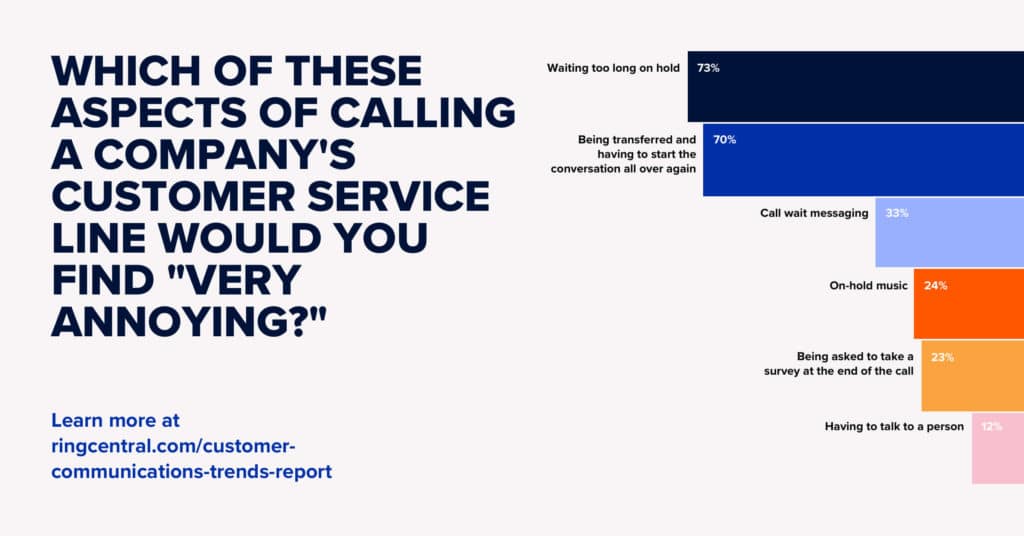
It’s not rocket science: Make it easy for customers to get in touch.
A reliable business phone service with effective call routing will streamline and simplify the way your customers contact you. Plus, make sure your inbound calls are being forwarded (when it makes sense to—like during travel, or any time you need to make yourself available).

For example, phone systems like RingCentral let you route calls to your personal number and your colleagues when you can’t pick up.
2. Check your online presence
What’s the state of your website and social channels? Are they informative and updated often? Automating transactions and capturing leads? Or are they just there, waiting for the day you’ll have a moment to spare to get to them?
Your online channels are often the first place customers go for information or help. Make sure you’re easy to find and give people different ways to get a hold of you.
Just setting up social media profiles on a bunch of different apps isn’t enough. You also have to respond to these messages—and not make your customers wait for a reply. Online customer service isn’t easy, but if you have the right tools, it can be done (even if you have a team of one handling it).
For example, RingCentral’s omnichannel contact center solution, RingCX, lets you see and respond to all your social media, live-chat, and email messages all in one place, so you don’t have to toggle between windows and tabs all day:
3. Get back to customers quickly enough
Just like not being able to reach a human, having your voicemail, email, or social media message ignored—or acknowledged at a snail’s pace—is just as frustrating.
Establish a hard rule about how quickly you return voicemails (Visual Voicemail can save you time by allowing you to read instead of listen to messages, and it helps you prioritize which ones you need to respond to first).
And don’t forget to set aside time every day to check your email or respond to comments on social media. All of these actions together help you answer customer questions quickly, solve their problems, and keep them as customers longer.
💡 Pro-tip:
Dig through your customer experience analytics and make sure to track metrics like your average handle time and first call resolution standard to see if you’re getting back to your customers and prospects in a timely enough manner.
4. Pay attention to your onboarding
If your product or service comes with a learning curve, how steep is it? More importantly, is there something you can do to make things easier for a new customer?
The first few interactions they have with your product will have a massive impact on their decision to keep using it or to look for another solution. Find out what makes customers want to stick with your product, then give them resources to make the experience easy.
For example, some companies send onboarding or welcome emails to new customers to help them get started.
5. Price your product or services correctly
Finding the best deal is just part of human nature. It’s often the biggest deciding factor in a purchase decision.
Are you pricing your product or service fairly? Is the cost in-line with the rest of your industry? If your price is higher, are you providing more value? And is that value being clearly communicated? Consider running a price sensitivity test to determine what the “right” price should be. Ensuring customers feel they’re getting value for money will help boost that customer retention rate.
6. Use a loyalty program
They’ve been around forever because they work. Is there something you could do to inspire more loyalty and increase your customer retention rate?
Think buy-X-get-one-free programs or discounts on annual subscriptions. If you’re feeling generous, the odd surprise “gift” can keep your customers happy and inspire reciprocity (in the form of continued business).
7. Zoom in on your competition
Keeping your customers from going to your competition is a big part of running a business. This begins with understanding what you do well and focusing on it. But it also involves understanding what your competition is doing to win customers at your expense.
Is their product better? Cheaper? Easier to use? Investigate from all sides. Buy their product. Go through their onboarding process. Call their help line. Sign up for their newsletter. You’re going to learn a lot—and it might even reveal things you can start doing yourself.
8. Look at your product.
Are your customers getting stuck with your product? Something that doesn’t make sense or isn’t clearly explained? Maybe you’re experiencing downtime that you don’t know about? Your product is the first place you should check for ways to improve—if it doesn’t work, nothing else matters.
💡 Pro-tip:
To help your customers get to know your product and learn how to use it on their own without needing your constant guidance, create a knowledge base that they can explore in their own time.
9. Keep track of what others are saying
A bad customer review or two isn’t something to worry about. But three (or more)?
There may be a good reason for them. Look for trends—both good and bad—in the reviews people leave for you. If possible, ask old customers about their experiences and find out why they left. They’ll give you an honest answer if you’re asking in earnest.
10. Devise a plan of attack
You’ve identified a handful of issues that could be keeping your CRR lower than it should be. Now, create a plan to address these issues.
Look for the easy wins first: updating your business address and hours in Google Maps, focusing on responding to your customers’ questions more quickly, and creating an FAQ page so that your customers can self-service.
You’d be surprised at how much of an impact small improvements make in reducing churn—especially at scale. Then, start addressing the bigger tasks. Commit to a schedule to make sure it gets done. Consider hiring someone to do it if it’s not your area of expertise. And conduct audits regularly.
It’s also important to be strategic about changes you make. Resist knee-jerk decisions and focus on sustained, manageable improvement and optimization.
Other key retention metrics to track
Your CRR is a great place to start and a crucial metric to track for most businesses. But it may not be telling you the whole story. Here are a few other important metrics that you may want to start tracking:
Lifetime Value (LTV)
What is the average value of every customer over the course of their lifecycle? This metric helps SaaS, media, and financial companies better understand their customers’ needs and the value of their product, and predict future earnings.
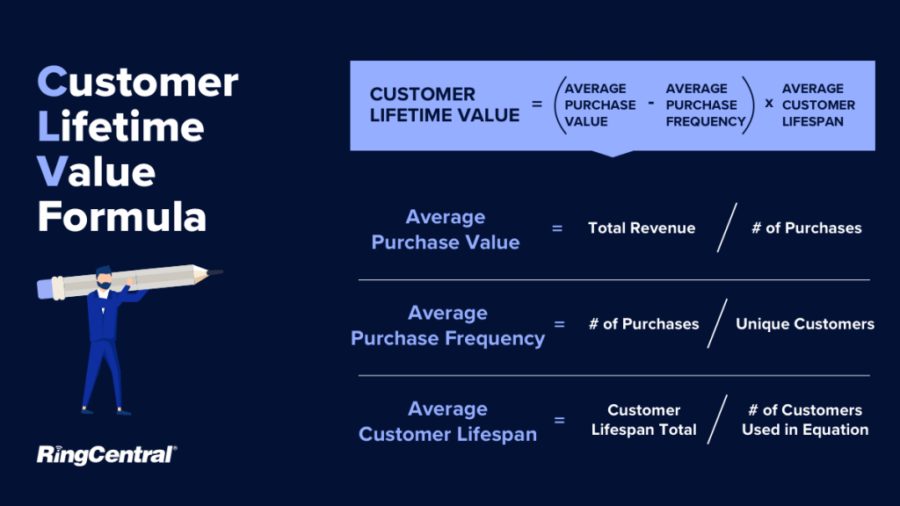 Product Return Rate (PRR)
Product Return Rate (PRR)
How often are products being returned? Ecommerce businesses use this metric as an indicator for the quality of products and customer service they offer.
Churn rate
We covered churn rate earlier in this article, but put simply it’s the rate at which you’re losing customers or users (You want this to be low).
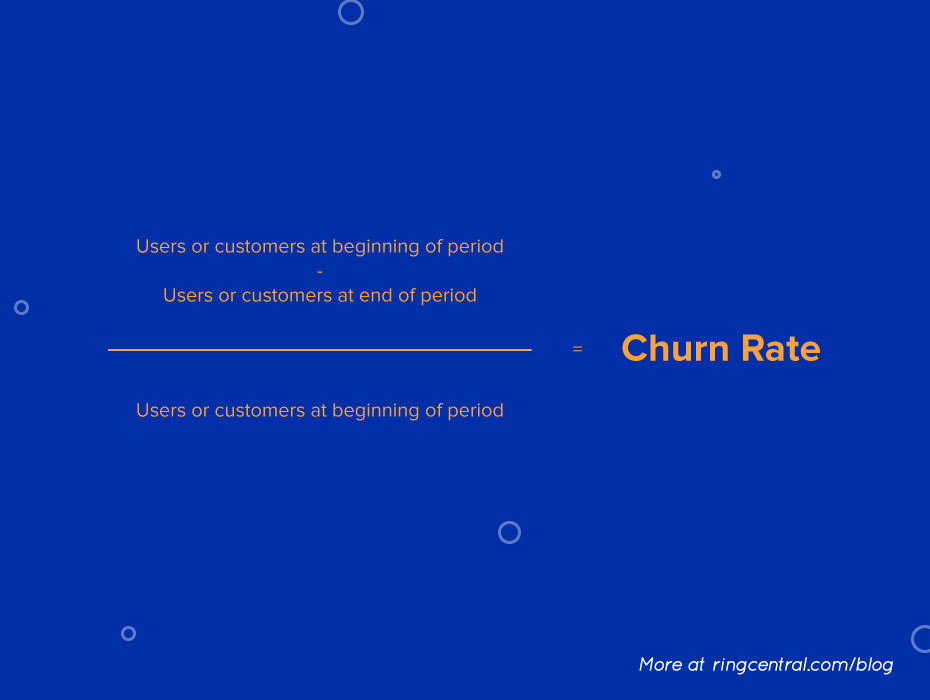
Time Between Purchase (TBP)
How frequently are your customers purchasing your products? This metric can tell ecommerce businesses with frequent repeat customers how much demand there is for their products, how much value they provide, and how good their customer service is.
Shopping Cart Abandonment rate (SCA)
Your customer has found what they need, placed it in the cart, made it all the way to the payment screen with a credit card in hand and… poof, they bounce.
This indicates a point of friction when customers have already said yes—they want to give you their money, but for some reason, they can’t. For example, a confirmation screen isn’t loading or the transaction isn’t completing. Find out why and fix it ASAP.
Net Promoter Score (NPS)
NPS isn’t an exact science and can’t be calculated by just using existing sales or usage numbers. But it gives you a good idea of how your customers feel about you and how likely they are to recommend you to a friend. Conducting an NPS survey can be a big task, but worth it if you have the resources to do it.
Knowing how to calculate customer retention rate is just the first step
Every business loses customers, and sometimes, it’s out of your control.
Tracking your CRR can give you valuable insights about how to fix what’s in your control. Things like providing excellent customer service, making your product easy to use, and ensuring it’s simple to buy.
The calculation only takes a moment, so be diligent about it. Addressing issues as you discover them will keep more of your customers happy and coming back.
Frequently asked questions
What are the best tools to use to measure customer retention rate?
The best tools for measuring customer retention rate—and the reasons behind it—include comprehensive web analytics platforms and CRM systems with detailed reporting and behavioral analytics.
You can also use customer support systems with integrated analytics, and subscription analytics platforms. These tools offer cohort analysis, user behavior tracking, customer journey mapping, and retention insights.
Why is customer retention important?
Customer retention is crucial because it reduces acquisition costs, increases customer lifetime value, and boosts profitability.
Loyal customers are more likely to make repeat purchases, refer others, and provide valuable feedback. This supports sustained business growth and delivers a strong competitive advantage. Retaining customers often costs less than acquiring new ones.
Originally published Jun 24, 2024, updated Jul 23, 2024




